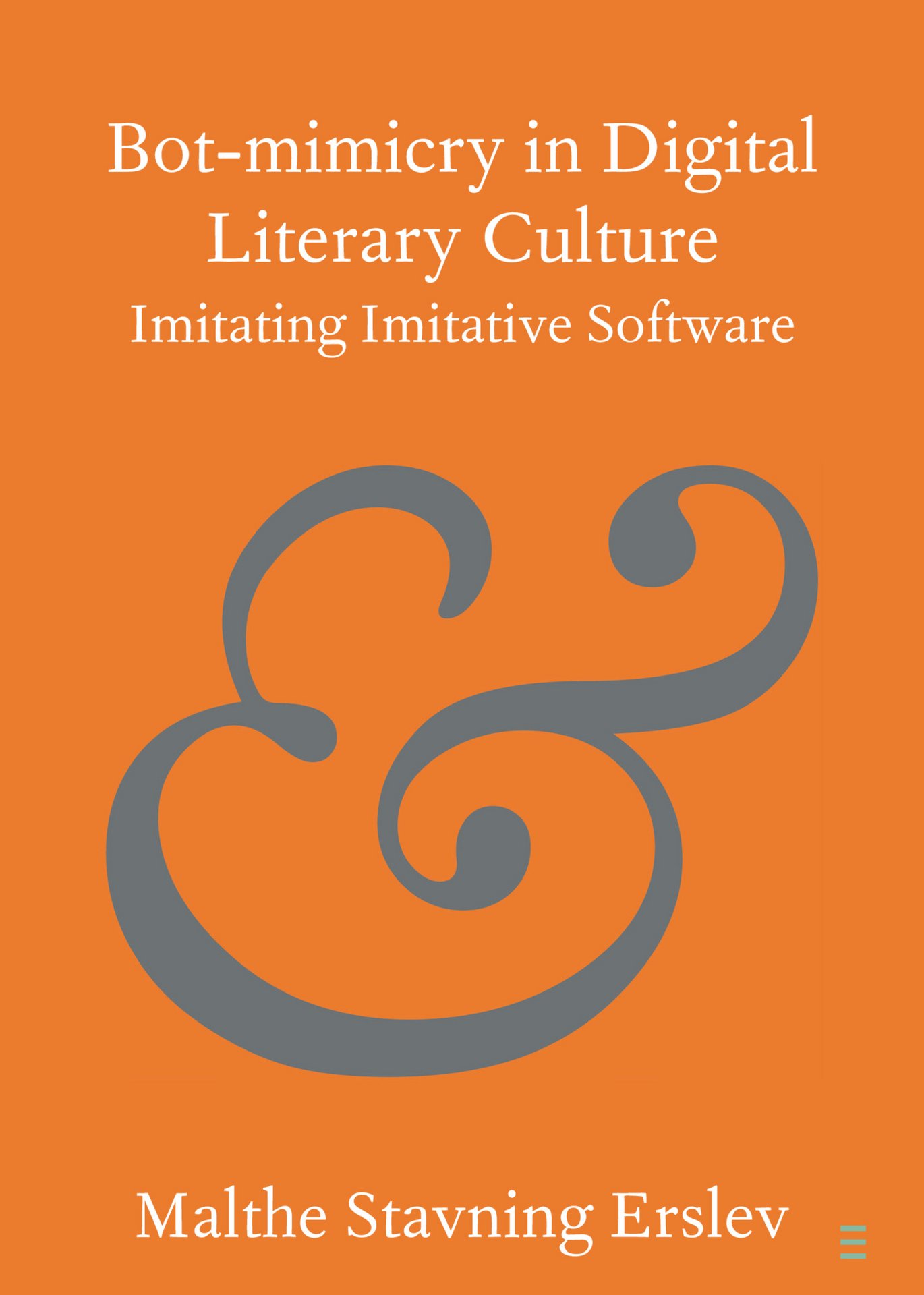New book: Bot-mimicry in Digital Literary Culture
Malthe Stavning Erslev, who recently finished his PhD with DARC, explores the role and form of writing post-generative AI in this minigraph on humans pretending to be chatbots. The book was written during Malthe Stavning Erslev’s PhD fellowship with DARC. Its themes and methods are highly intertwined with, and influenced by, the activities in and around the center.

Artificial intelligence is, and has been, designed to imitate humans. Human brains, human labor, human writing. This imitation is, however, not a one-way street: just as computers are increasingly proficient at imitating humans, so too do humans engage in, and reverse, the imitation. What histories, practices, and imaginative systems are brought into play when humans – charged with mimetic faculties and a sense of new media idiocy – turn the imitation game on its head and begin to mimic conversational systems? What is the style of a chatbot? Why is it like that? How can we play with it to render our relation to computers differently? These questions are at the center of this book, which skips the hype of speculating about what generative artificial intelligence will achieve in a near or far future in favor of understanding the contingency of currently ongoing transformations of writing practices online.
DOWNLOAD: https://doi.org/10.1017/9781009222426
FULL ABSTRACT: This Element traverses the concept and practice of bot mimicry, defined as the imitation of imitative software, specifically the practice of writing in the style of social bots. Working as both an inquiry into and an extended definition of the concept, the Element argues that bot mimicry engenders a new mode of knowing about and relating to imitative software – as well as a distinctly literary approach to rendering and negotiating artificial intelligence imaginaries. The Element presents a software-oriented mode of understanding Internet culture, a novel reading of Alan Turing's imitation game, and the first substantial integration of Walter Benjamin's theory of the mimetic faculty into the study of digital culture, thus offering multiple unique lines of inquiry. Ultimately, the Element illuminates the value of mimicry – to the understanding of an emerging practice of digital literary culture, to practices of research, and to our very conceptions of artificial intelligence.
